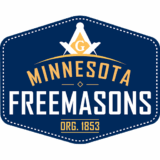The Ku Klux Klan and Freemasonry in 1920s America, by Miguel Hernandez
The Ku Klux Klan originated after the Civil War during Reconstruction to intimidate formerly enslaved persons. It became inactive but was chartered as a new fraternity in 1915.[1] Three novels in the early 1900s, as well as the rise of the myth of the Lost Cause, revived interest in the Klan.[2] The release of the wildly popular silent film, Birth of a Nation was perhaps the singular event to promote a resurgence of the Klan.[3]
The Ku Klux Klan and Freemasonry in 1920s America is based on the doctoral thesis of Miguel Hernandez.[4] The author notes that the founder of the Second Invisible Empire, William Joseph Simmons, was an eager member of various fraternities, including Freemasonry.[5] The similarities between the Klan structure and Masonic (and other fraternities) were intentional.
The Klan took off when a marketing firm was contracted to sell memberships in the organization. The firm established public initiations and other publicity stunts to promote the Klan. $10 purchased a membership in the organization, with $8 of that to be paid as commissions to the promotors.[6]
The book outlines the Klan’s marketing program to intentionally target members of Freemasonry when expanding to a new city. While there were certainly Freemasons who enthusiastically joined the Klan, there were others who were essentially duped into believing that the Klan was endorsed by, if not an attendant body of, Freemasonry. (Even MWB Harry S Truman paid his $10 in 1922 and soon realized his mistake. His $10 was returned.)[7]
The issue of Masons’ membership in the Klan was disruptive in many jurisdictions, inducing several Grand Masters to issue statements condemning the Klan, while others were supportive of the Klan, either overtly or subtly.[8]
Hernandez was hampered by a lack of records by the Klan. He was able to piece together membership in the Klan and Masonry in two cities, Dallas Texas and Anaheim California, and draw some conclusions about joint membership.[9] While some of his extrapolations may be questioned, the book is a thought-provoking look at a question that has intrigued our fraternity for decades.
______________________________
The Ku Klux Klan and Freemasonry in 1920s America, by Miguel Hernandez can be found at Amazon.com for $160 for hardcover or $46.50 on Kindle; rent for $26.93 from VitalSource.com, or downloaded for free from the-ku-klux-klan-and-freemasonry-in-1920s-america : Miguel Hernandez : Free Download, Borrow, and Streaming : Internet Archive
Submitted by Thomas G McCarthy, Past Grand Master
[1] The Ku Klux Klan and Freemasonry in 1920s America, by Miguel Hernandez, Page 2
[2] The 1902 romance, The Leopard’s Spots, presented Klansmen as noble knights who rode out in defense of white womanhood and against Northern outrages during Reconstruction. This novel was followed by two equally successful sequels: The Clansman (1905) and The Traitor (1907), both of which featured equally unambiguous plots and heroic Southern Klansmen. Ibid., Page 3
[3] Id.
[4] Ibid,,Page ix
[5] Ibid., Page 4
[6] Ibid., Page 7
[7] Truman, David McCulloug (1992), page 164-165
[8] Ibid., Chapter 7
[9] Ibid., Chapter 6
